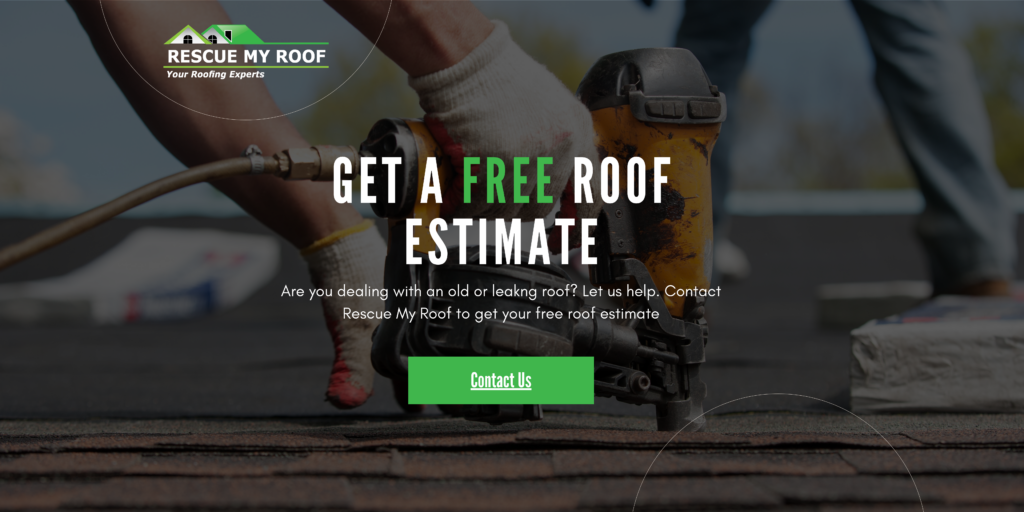4 Environmentally Friendly Roofing Options
In today’s environmentally conscious world, sustainable building practices are becoming increasingly important. And when it comes to roofing, homeowners have a wide array of environmentally friendly options to choose from.
These eco-friendly roofing materials not only help reduce environmental impact but also offer benefits such as energy efficiency, durability, and aesthetic appeal.
Rescue My Roof has worked with thousands of homeowners from all walks of life. We have helped them achieve the roofs of their dreams – and we’re here to help you, too.
In this article, we’ll explore some of the top environmentally friendly roofing options available and their benefits for both homeowners and the planet. Ultimately, if you are an environmentally conscious homeowner, you’ll know which roofing material calls to you.
Eco-Friendly Roofing Materials
Whether you are passionate about helping the environment or just want a more affordable electric bill, an eco-friendly roof is a smart addition to any home.
These roofing materials and methods aim to help the home use as little energy as possible. Typically, they focus on temperature control as well as airflow in the home.
The good news is, there are a number of options for eco-friendly roofing, making it easier to find one within your budget.
1. Solar Roofing

Solar roofing has emerged as a leading environmentally friendly option for homeowners looking to harness renewable energy and reduce their carbon footprint.
Solar panels integrated directly into the roofing material allow homeowners to generate clean, renewable electricity from the sun’s rays. This not only helps lower energy bills by offsetting electricity consumption but also reduces reliance on fossil fuels, thereby lowering greenhouse gas emissions and mitigating climate change.
Additionally, advancements in solar technology have made solar roofing more affordable and aesthetically pleasing, with options available to match various architectural styles.
2. Cool Roofs

Cool roofing materials are designed to reflect more sunlight and absorb less heat than traditional roofing materials, thereby reducing heat transfer to the building below.
By keeping roofs cooler, cool roofs help reduce the demand for air conditioning and lower energy consumption, particularly in hot climates. Cool roofing options include materials such as white or light-colored coatings, reflective tiles, and metal roofs with reflective finishes.
In addition to energy savings, cool roofs also help mitigate the urban heat island effect and improve overall air quality.
Rescue My Roof has a cool roof option with Pinnacle Sun shingles. Contact us today to get a free estimate.
3. Green Roofs

Green roofs, also known as living roofs or vegetative roofs, are composed of a layer of vegetation and soil installed on top of a waterproof membrane. These roofs provide numerous environmental benefits, including improved stormwater management, reduced urban heat island effect, enhanced air quality, and habitat creation for wildlife.
Green roofs also help insulate buildings, reduce energy consumption, and extend the lifespan of roofing materials by protecting them from UV radiation and temperature fluctuations. While green roofs require specialized design and installation, their long-term environmental and economic benefits make them a compelling choice for eco-conscious homeowners.
4. Recycled and Sustainable Roofing Materials

Choosing roofing materials made from recycled or sustainable sources is another excellent way to reduce environmental impact.
Recycled-content roofing materials, such as recycled metal, rubber, or plastic, divert waste from landfills and conserve natural resources. Sustainable roofing materials, such as sustainably harvested wood shakes, bamboo, or clay tiles, are sourced from renewable or rapidly renewable materials and often have lower environmental footprints than conventional materials.
Additionally, composite shingles are another roofing material made from recycled materials while maintaining the look of a traditional asphalt shingle. However, for a composite roof, you’ll pay two to three times more. Composite roofs generally run between $13 – $20 per square foot, which means if you have a 1200 sq. ft. Roof, you would be paying upwards of $15,000.
By opting for recycled or sustainable roofing materials, homeowners can reduce their carbon footprint while still enjoying the benefits of a durable and aesthetically pleasing roof.
How Eco-Friendly Roofing Benefits Your Home
Environmentally friendly roofing options offer homeowners a range of sustainable solutions to reduce their environmental impact and create more energy-efficient and resilient homes. Whether it’s harnessing solar energy, improving energy efficiency with cool roofing, creating green spaces with living roofs, or choosing recycled and sustainable materials, there are plenty of eco-friendly options to suit every budget and aesthetic preference.
By investing in environmentally friendly roofing, homeowners can contribute to a greener future while enjoying the many benefits of a sustainable home.
Learn more about eco-friendly roofing options with “Are Composite Shingles Right For You” and “How to Choose the Best Shingle Style for Your Home.”
Are you looking for a reliable roofing contractor in southeastern Wisconsin? Rescue My Roof is ready to serve. Contact us today to get a free roof estimate.


